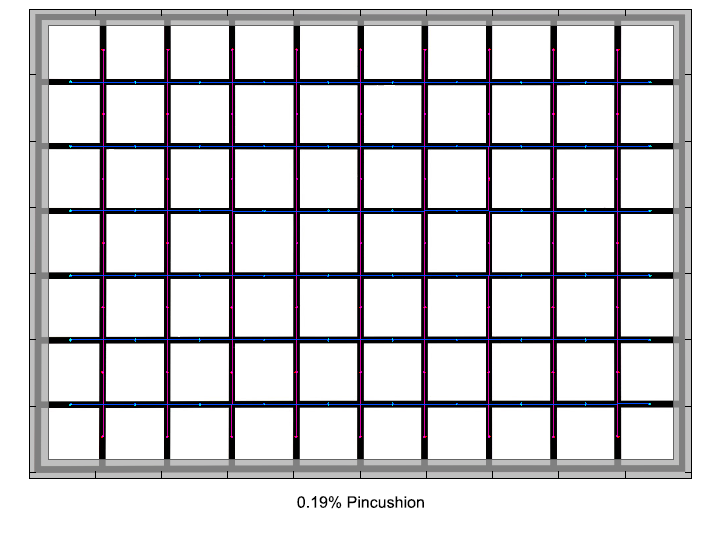|
Page 2 of 3

Distortion
The Sonnar produces a tiny amount of pincushion distortion. At 0.19% it is so low that in practical terms the lens can be considered distortion-free.

The chart above has a real-world size of about 120x80cm.
Vignetting
Being a fast lens, one would expect the Sonnar to show some light fall-off towards the borders at large apertures. Being a fast Zeiss lens, even more so. With that in mind, vignetting of 1.37 stops wide open is fairly good news.
As usual, stopping down reduces the amount of vignetting considerably. From f/4 onwards, it shouldn't be an issue anymore for most subjects.
We're performing our vignetting analysis based on
(uncorrected) JPEGs straight from the camera. The JPG engine of the Nikon D3x features a rather flat
gradation curve, thus has a moderate contrast characteristic, resulting in comparatively low vignetting figures - the
corresponding Canon figures are roughly 40% higher due to the more
aggressive default contrast setting.

MTF (resolution)
The resolution figures of the lens are stunning and on an exceptionally high level. Straight from the maximum aperture, the Sonnar delivers excellent resolution not only in the image center, but across the whole frame.
At smaller apertures the MTF numbers increase to even higher values. Theoretically the peak performance is reached at f/4. Practically, however, the sharpness is on such a high level at any aperture setting between f/2 and f/8 that there is no visible difference.
Please note that the MTF results are not directly comparable across the different systems!
Below is a simplified summary of the formal findings. The chart shows line widths
per picture height (LW/PH) which can be taken as a measure for sharpness.
If you want to know more about the MTF50 figures you may check out the corresponding
Imatest Explanations

Chromatic Aberrations (CAs)
Lateral CAs (color shadows at harsh contrast transitions) are well controlled with consistently low amounts of around half a pixel on the average at the image borders.

Bokeh
The lens not only delivers outstanding sharpness, it also combines it with very pleasant bokeh.
Image blur is very smooth both in front of as well as behind the focal plane. In addition, background highlights are evenly filled and show almost no outlining. Typical for such a fast lens on full-frame, however, the highlights show a cat's eye shape at the image borders at large apertures due to mechanical vignetting.

Bokeh Fringing
Bokeh fringing (non-coinciding focal planes of the various colors) is a common issue with relatively fast glass. It is usually visible as halos of different colors - magenta (red + blue) in front of the focus point and green beyond. Unlike lateral CAs, bokeh fringing cannot easily be fixed in post processing.
The Zeiss is an APO lens though, which means it corrects most of these colour shifts. As can be seen in the images below, there is only a minor amount of colour casts visible at f/2 that disapperas completely by stopping down.
|
Move the mouse cursor over the f-stop marks below to observe the respective LoCAs
|
| f/2 |
f/2.8 |
f/4 |
f/5.6 |
f/8.0 |
|

|
|